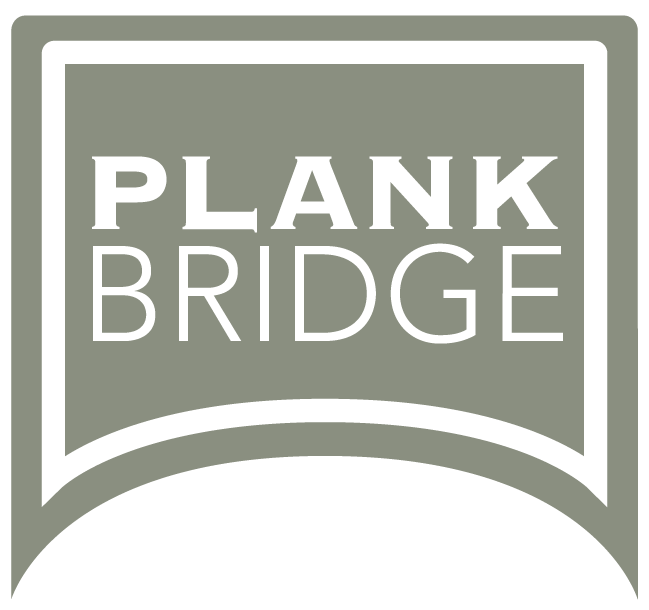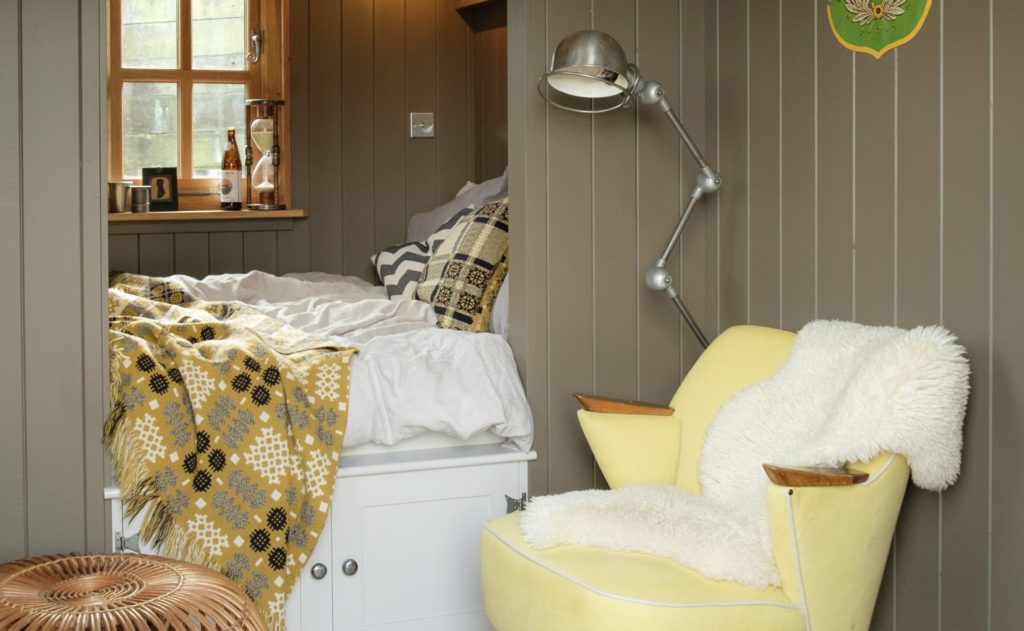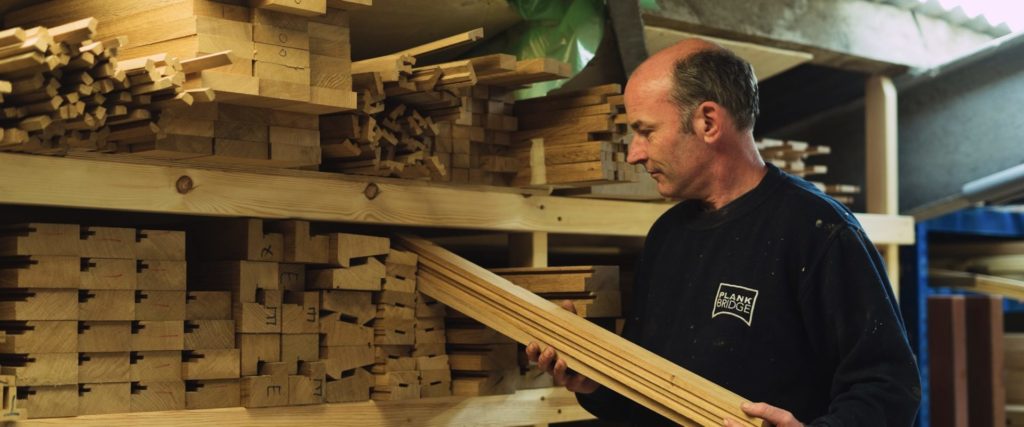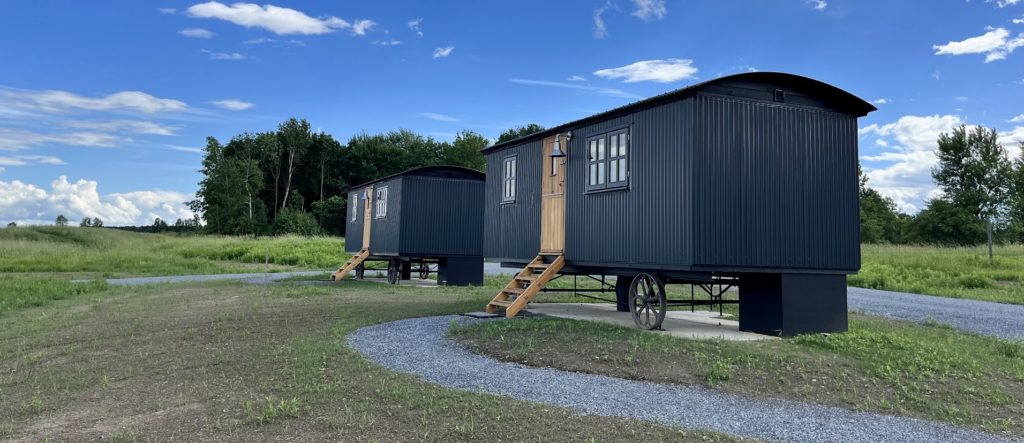I’m sitting in my hut to write this, elevated two feet off the ground by traditional cast iron shepherd’s hut wheels with just the Spring morning bird song and the gentle, comforting roar of the freshly lit wood stove for company.
The stove is now fully alive, and I’ve eased down the air intake. It is settling to that reassuring gentle crackle as I stoke it again with tiny off-cuts from the workshop. It is warming the hut comfortably despite the stable door being open to the bright Sunday morning beyond, and it’s quickly creating the most conducive place to sit and think.
Original Shepherd’s Hut Wheels
Over the years I’ve had a few people say ‘What is it with the wheels, why would I want those?’ The shepherd’s hut of old, from humble beginnings centuries ago through to its heyday in mid to late Victorian times was a small portable house for a solitary shepherd to tend his flock, mainly around lambing time but also useful throughout the year. It had to be portable, pulled around by horse, steam engine and later modern tractors. Rural foundries would cast the iron wheels for shepherd’s huts and other essential farm equipment like grain stores and water bowsers.
These days the wheels on the fixed axle end tend to be around 760mm across, and the steering end slightly smaller. Old huts often had wheels which were much larger in diameter, which were cleverly made with a cast iron hub and rim with steel spokes. These bigger wheels would have made it easier for the cart horse to pull the heavy hut out of the farmyard and to negotiate rough farm tracks.
The cast iron wheel is so intrinsically linked to the shepherd’s hut that I believe you can’t have one without the other, if the structure is to be referred to as a shepherd’s hut at all.
Modern Shepherd’s Hut Wheels
These days it is worth being aware of a few things when looking for wheels. There are charlatans out there who take farm ring rollers apart and sell the rings as shepherd’s hut wheels. A good earner for them, as there are lots of rings to harvest from a single ring roller. They are no use at all, as they are not made as a wheel and would crack and shatter. They tend to have four ‘spokes’ and the rim is raised to a peak in the middle. Steer clear of those, as the vendor will certainly have the last laugh.
Buying Shepherd’s Hut Wheels
Fifteen years or so ago you could buy genuine wheels at farm sales, or on auction sites, and for a few years we would attend some of the on-farm auctions to buy sets of wheels and axles. It was fun to see the local characters who would turn up to every sale as their regular social occasion, and they would perhaps only buy a breakfast roll and a bucket of assorted screws and bolts for a pound. It was always so sad to see the resident farmer selling up, for whatever reason. Seeing his life’s work laid out in neat rows on a field to be sold to the huddle of buyers gathered around each lot, bidding with furrowed brows to the rapid rattle of the auctioneer’s quick-witted banter.
I saw the prices of complete shepherd’s huts, and wheels and spare parts, rise rapidly up and up; I suppose we were part of the demand which drove the prices skywards. I would say you would be very lucky to find original wheels now and could be closing the bidding at around £1000 if you did.
These days it’s easier to purchase newly cast shepherd’s hut wheels from a foundry. It’s a bit of an investment if you are making, or restoring, your own hut but well worth it. You will need a suitable axle and steering plate arrangement too. Please don’t fall for small chicken house wheels, there’s some shocking examples of those out there. A rolled steel rim on a central scaffold tube hub is another thing to avoid – it won’t last like cast iron will and is really a confidence trickster’s ploy.
Plankbridge Wheels
The wheels that Plankbridge use are made from molten pig iron and cast in a foundry not far from here, to our own patterns. We have the Plankbridge name cast into one of the spokes, and it’s so satisfying to think how long those wheels will last. There are a few foundries throughout the UK who can still supply genuine cast iron wheels. I have a photo of Isambard Kingdom Brunel on my desk next to me, and I’m thinking of all the cast iron structures that would have been specified to his designs, and how much of that is still around today.
As time has moved on the huts we make have become bigger so they can’t really be called a shepherd’s hut any more. We still make traditional twelve foot shepherd’s huts, like the one I am writing in now. But once bathrooms and kitchens are required for a more fully equipped living space it, of course, becomes something else. We call the larger huts Cabin’s, and whilst most are still built on a rolling chassis we have recently been doing much bigger structures that sit down on a base, without the large cast iron wheels.
It’s a step into the Tiny House world, still very much built in our workshops and delivered ready to use. They remain portable, and can also be craned into place, or wheeled around on industrial castors. Still very much a portable structure, rooted in Victorian heritage, but contemporary and of its day.
I believe the foundries, engineers, blacksmiths and shepherds of bygone times would approve. We are keeping the heritage and craftsmanship that they started all those years ago alive.







